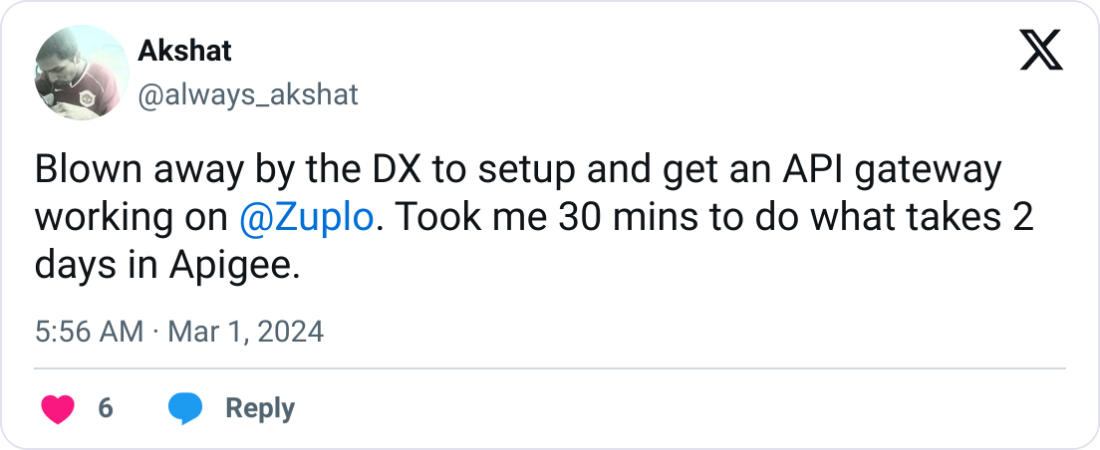Well-crafted API documentation serves as a universal language between technical and non-technical stakeholders, transforming from mere reference material into a powerful collaboration hub. When organizations undervalue this resource, the consequences are immediate and costly—64% of developers report frustration with poor documentation, directly impacting project timelines and team efficiency.
In this guide, you'll discover how to leverage API documentation as a strategic asset to bridge team divides, streamline workflows, and accelerate development cycles. Let's talk about how documentation can become your most valuable tool for cross-team alignment.
- The Real Cost of Poor Documentation on Team Alignment
- Building a Universal Language with Cross-Functional Documentation Standards
- Choosing the Right Tools for Documentation Collaboration
- Putting Documentation First: The API-First Approach
- Centralizing Knowledge with API Gateways as Documentation Hubs
- Making Documentation Part of Your Development DNA
- Eliminating Information Silos with Documentation Knowledge Bases
- Fostering a Documentation Culture Across Teams
- Measuring the Impact: Documentation's ROI on Collaboration
- Overcoming Common API Documentation Challenges
- Documentation as Your Collaboration Cornerstone
The Real Cost of Poor Documentation on Team Alignment#
Poor API documentation isn't just a technical inconvenience—it's a significant business liability that ripples throughout your organization. When documentation fails to serve as a clear, shared language between teams, costs quickly multiply.
The financial impact is substantial. According to a study by CodeRabbit, teams struggling with fragmented knowledge and unclear API documentation face measurable productivity losses that directly translate to extended project timelines and wasted resources.
Consider these concrete costs:
- Extended onboarding times: New developers can spend up to two weeks simply understanding how to integrate with poorly documented APIs.
- Development delays: Outdated documentation causes rework and extended timelines.
- Increased support burden: Poor documentation leads to repetitive questions that consume engineering resources.
- Cross-team friction: Without a single source of truth, misalignment creates communication breakdowns.
The impact extends beyond engineering teams to product managers, QA engineers, support teams, and external partners. Companies like Spotify and Stripe have demonstrated that investing in quality documentation reduces integration time and enhances user satisfaction.
Building a Universal Language with Cross-Functional Documentation Standards#

Creating effective API documentation standards that work across different teams is crucial for successful collaboration. Understanding the importance of API documentation helps ensure that all stakeholders can easily understand and contribute to documentation, reducing misunderstandings and accelerating development cycles.
Essential Components of Cross-Team API Documentation#
A comprehensive API documentation standard should include these key elements:
- Endpoint descriptions: Clear explanations of each API endpoint's purpose.
- Request parameters: Detailed breakdown of required and optional parameters.
- Authentication methods: Step-by-step authentication instructions.
- Response formats: Examples of successful responses with explanations.
- Error codes: Complete list of possible errors with troubleshooting guidance.
- Use cases: Real-world examples showing practical applications.
- Code samples: Examples in multiple programming languages for diverse teams.
By including these elements, you create a shared language that bridges technical and business teams. Following API documentation best practices ensures that your documentation is effective and accessible.
Documentation-as-Code: Integrating Docs into Development Workflow#
Treating documentation as code brings significant benefits:
- Version control: Track documentation changes alongside code changes.
- Automated validation: Enforce documentation standards through automated checks.
- Pull request reviews: Include documentation updates in code reviews.
- CI/CD integration: Automatically generate and deploy updated documentation.
This approach ensures documentation stays synchronized with the API implementation, significantly enhancing developer experience.
# Example OpenAPI specification that serves as both documentation and code
openapi: 3.0.0
info:
title: Sample API
version: 1.0.0
paths:
/users:
get:
summary: Returns a list of users
responses:
"200":
description: Successful responseVersion Control Strategies for Living Documentation#
Documentation must evolve alongside your API. Implement these version control strategies:
- Semantic versioning: Align documentation versions with API versions.
- Changelog maintenance: Document all changes between versions.
- Version-specific examples: Provide code samples for each supported version.
- Migration guides: Create clear paths for users to move between versions.
These strategies, in line with API versioning best practices, help technical teams maintain backward compatibility while giving product teams visibility into the API's evolution.

Over 10,000 developers trust Zuplo to secure, document, and monetize their APIs
Learn MoreChoosing the Right Tools for Documentation Collaboration#
When it comes to API documentation, having the right tools can make all the difference in promoting cross-team collaboration. Let's explore how to select documentation platforms that truly enhance team synergy.
Evaluation Criteria for Collaboration-Focused Documentation Tools#
When evaluating documentation tools, focus on these key collaboration features:
- Real-time collaboration capabilities: Allow multiple team members to work simultaneously.
- Version control integration: Track changes and maintain documentation history.
- Commenting and feedback systems: Enable contextual comments for faster reviews.
- Access control and permissions: Provide appropriate access levels for different stakeholders.
- Customizable templates: Ensure consistency across documentation created by different teams.
Before committing to a tool, consider running a small pilot with representatives from different teams to evaluate its effectiveness for your specific needs.
Integration Capabilities with Development Ecosystems#
The most effective documentation platforms seamlessly integrate with your existing development tools:
- Git integration: Tools like Zudoku, GitBook and Readme sync directly with repositories.
- JIRA connection: Platforms that link documentation to relevant tickets enhance traceability.
- Slack notifications: Integration with communication tools ensures teams stay informed.
- CI/CD pipeline compatibility: Documentation should update automatically with API changes.
For example, Zudoku offers strong integration with CI/CD workflows, allowing documentation to be automatically generated and updated with each build.
Features That Promote Cross-Team Engagement#
When comparing popular documentation platforms, certain features stand out:
Zudoku
- Automatically generate API reference documentation and playground from your OpenAPI document.
- Support MDX documentation pages, allowing writers to create content, and developers to embed React/Web components.
- Extensible via plugins, allows flexibility in page design and SEO-optimization
Swagger/OpenAPI:
- Interactive API documentation accessible to non-developers.
- Mock servers that visualize API behavior before implementation.
- Automated documentation generation from code.
Postman:
- Shared workspaces for collaborative API development.
- Interactive testing interfaces accessible to non-developers.
- Version control for documentation and API specifications.
GitBook:
- User-friendly editor for both technical and non-technical contributors.
- Structured organization of complex documentation.
- Powerful search capabilities for quick information access.
ReadMe:
- Customizable API explorers that make testing intuitive.
- Analytics that show which documentation sections are most used.
- Feedback collection systems integrated into documentation pages.
Putting Documentation First: The API-First Approach#

Placing documentation at the center of your API development process can significantly improve cross-team collaboration and streamline project workflows. By adopting an API-first approach, documentation becomes the foundation of your development strategy rather than an afterthought.
Design-First vs. Code-First: Implications for Team Alignment#
When you choose a design-first approach over code-first development, you fundamentally change how teams collaborate:
- Teams align on API contracts before writing code.
- Frontend and backend developers can work in parallel.
- Product managers can review API designs early in the process.
- Cross-team dependencies become clear from the beginning.
This approach naturally reduces back-and-forth between teams. According to SwaggerHub, teams using an API-first approach often see up to 40% faster integration times compared to traditional methods.
Automated Documentation Generation from API Specifications#
Modern API design tools make it simple to generate comprehensive documentation directly from specifications. For example, automating OpenAPI generation from your database schema can streamline the documentation process.
- OpenAPI specifications serve as both design documents and the basis for auto-generated documentation.
- Changes to the specification automatically update the documentation, simplifying the process of maintaining updated documentation.
- Teams work from a single source of truth rather than maintaining separate documentation.
Contract Testing for Documentation Accuracy#
To ensure documentation remains accurate and up-to-date, implement contract testing:
- Create automated tests that verify API implementation matches documentation.
- Run these tests in your CI/CD pipeline to catch discrepancies early.
- Use tools that validate responses against your OpenAPI specification.
This approach creates a feedback loop where implementation is continuously verified against documentation, catching discrepancies early in the development cycle rather than during integration or production.
Centralizing Knowledge with API Gateways as Documentation Hubs#
Modern programmable API gateways offer a powerful solution by serving as centralized documentation hubs that automate and standardize your API documentation processes, improving cross-team collaboration.
Dynamic Documentation Generation from Live APIs#
API gateways can automatically generate and update documentation based on actual API traffic and configurations:
- Real-time updates: As APIs evolve, gateways automatically update documentation to reflect changes.
- Single source of truth: By generating documentation directly from API traffic, you eliminate implementation-documentation disconnects.
- OpenAPI integration: Most modern gateways integrate with OpenAPI specifications to generate comprehensive, interactive documentation.
Enforcing Documentation Standards Through Gateway Policies#
One powerful aspect of using API gateways for documentation is the ability to enforce consistent standards:
- Documentation policies: Implement gateway policies that require specific documentation elements before API publication.
- Custom templates: Programmable gateways provide customizable documentation templates for consistency.
- Validation checks: Gateways can automatically validate that documentation meets your standards.
Centralized Governance for Distributed Teams#
For organizations with multiple teams building APIs, programmable gateways provide a centralized platform for documentation governance. Implementing effective API governance ensures consistency and compliance across your APIs.
- Cross-team visibility: All teams can see and reference each other's API documentation.
- Role-based access controls: Define who can view, edit, and publish documentation.
- Versioning support: Maintain documentation across multiple API versions.
By establishing your API gateway as your documentation hub, you create a single, authoritative source that bridges silos between teams, reduces duplication, and ensures consumers always have access to accurate, up-to-date documentation. This centralization not only improves collaboration but also significantly enhances developer productivity.
Making Documentation Part of Your Development DNA#
Documentation-Driven Development (DDD) transforms traditional workflows by elevating documentation to a first-class citizen in your development process. By integrating documentation into every phase of your development lifecycle, you significantly improve cross-team collaboration.
Documentation as a First-Class Deliverable#
Making documentation a primary deliverable requires a fundamental shift in approach:
- Start with documentation before code: Outline API contracts, behaviors, and use cases first.
- Keep documentation and code in sync: Update both simultaneously as features evolve.
- Include documentation tasks in sprint planning: Allocate dedicated story points.
- Make documentation part of "definition of done": Features aren't complete until documentation is updated.
Documentation Reviews in the Development Workflow#
Just as code reviews improve code quality, documentation reviews enhance documentation quality:
- Include documentation in pull request reviews.
- Create documentation-specific review checklists.
- Assign reviewers with different expertise levels to ensure clarity.
- Use collaborative tools that support inline commenting and track changes.
An effective approach is implementing documentation reviews as a prerequisite for merging code changes, maintaining consistency between code behavior and documentation.
Testing Documentation for Accuracy and Completeness#
Documentation should be tested just like code:
- Create automated tests that validate code examples in documentation.
- Set up continuous integration pipelines that build and verify documentation.
- Use tools like Zudoku to automatically validate API documentation against implementation.
- Implement regular "documentation walkthroughs" with team members.
According to a study by Postman, teams that implement automated documentation testing experience 40% fewer support tickets related to API usage questions.
Eliminating Information Silos with Documentation Knowledge Bases#
Centralizing knowledge through well-structured documentation hubs is crucial for eliminating information silos. When teams can easily access, contribute to, and discover documentation, cross-functional collaboration becomes more effective and knowledge-sharing barriers are reduced.
Designing Multi-Audience Documentation Repositories#
Creating documentation that serves different stakeholders requires thoughtful organization:
- Topic-based organization: Structure documentation around specific topics rather than team structures.
- Role-based views: Create tailored navigation paths for different roles.
- Progressive disclosure: Layer information from high-level overviews to technical details.
- Consistent templates: Develop standardized templates for different document types.
When designing multi-audience repositories, consider implementing:
- A clear homepage directing different users to relevant sections
- Cross-linking between related topics
- Search functionality with audience-specific filters
- Nested navigation that groups related information
Balancing Accessibility with Governance#
Effective documentation repositories must balance openness with appropriate governance:
- Permission tiers: Implement role-based access levels for different sections.
- Review workflows: Create lightweight approval processes for critical documentation.
- Change tracking: Maintain version history and attribution.
- Contribution guidelines: Establish clear standards for documentation quality.
Modern documentation platforms like GitBook facilitate this balance with features like collaborative editing, granular permissions, authentication integration, and automated quality checks.
Fostering a Documentation Culture Across Teams#
Creating exceptional API documentation isn't just about tools or templates—it's about fostering a culture where documentation is valued across your entire organization. When documentation becomes a shared responsibility, it transforms from a burden into a valuable collaboration asset.
Documentation Champions Program#
One effective way to build a documentation culture is by establishing a Documentation Champions program that empowers advocates across different teams:
- Identify potential champions: Look for team members who demonstrate good documentation habits.
- Define clear responsibilities: Champions should have specific duties like reviewing documentation and mentoring colleagues.
- Provide dedicated time: Ensure champions have allocated time for documentation activities.
- Create recognition systems: Acknowledge champions' contributions through recognition programs.
- Establish regular meetings: Schedule gatherings where champions can share challenges and successes.
By spreading documentation expertise across teams, you create a sustainable approach to maintaining quality documentation even as team members come and go.
Cross-Team Documentation Workshops#
Workshops bring different teams together to collaborate on documentation, breaking down silos and building shared understanding. Here's a sample agenda for a half-day cross-team documentation workshop:
Half-Day Documentation Workshop Agenda (3 hours)
- 9:00-9:20: Introduction and Goals
- Review workshop objectives and pain points from each team.
- 9:20-10:00: Documentation Audit
- Break into mixed-team groups to review existing documentation.
- 10:00-10:45: User Journey Mapping
- Map how different users interact with your documentation.
- 10:45-11:00: Break
- 11:00-11:45: Collaborative Documentation
- Mixed teams improve one section of documentation together.
- 11:45-12:00: Commitment and Next Steps
- Each participant shares one action they'll take.
The key to successful workshops is ensuring every team has representation and actively participates, building mutual understanding of each team's documentation needs.
Measuring the Impact: Documentation's ROI on Collaboration#
How do you know if your API documentation efforts are actually making a difference? As teams invest resources into creating better documentation, it's essential to measure the impact on collaboration and project success.
Quantitative Metrics for Documentation Effectiveness#
To objectively assess the impact of your API documentation, track these key metrics:
- Time to First API Call: Measure how quickly new developers can successfully make their first API call.
- Support Ticket Volume: Track the number of support tickets related to API usage.
- Integration Time: Monitor the overall time required for developers to integrate your API.
- Error Rates: Measure the frequency of errors made by developers using your API.
- Documentation Usage: Track page views, time spent on documentation pages, and navigation patterns.
Establish a baseline before making significant improvements, then measure changes over time to demonstrate tangible impact.
Qualitative Assessment Methods#
While quantitative metrics provide valuable data points, qualitative feedback offers deeper insights:
- Developer Satisfaction Surveys: Regularly survey developers about documentation quality.
- Team Retrospectives: Include documentation as a specific discussion point in retrospectives.
- User Interviews: Conduct one-on-one interviews with documentation users.
- Feedback Mechanisms: Implement simple feedback tools within your documentation.
Combining these qualitative methods with quantitative metrics provides a more complete picture of documentation effectiveness.
Correlating Documentation Quality with Business Outcomes#
The true value of improved documentation comes from its impact on broader business goals:
- Accelerated Development Cycles: Compare project timelines before and after documentation improvements.
- Cross-Team Collaboration Efficiency: Measure time spent on clarification meetings between teams.
- Onboarding Efficiency: Track how quickly new team members become productive.
- API Adoption Rates: Monitor how quickly developers adopt and integrate your API.
Create a simple dashboard combining these metrics to visualize how documentation efforts translate to tangible business outcomes, making it easier to demonstrate ROI to stakeholders.
Overcoming Common API Documentation Challenges#
Keeping Pace in Fast Development Environments#
Maintaining accurate API documentation during rapid development is challenging. Implement an API-first approach where documentation is prioritized before development begins, ensuring all stakeholders align on expectations from the outset.
Leverage tools like Zudoku + OpenAPI to automatically generate reference documentation from API specifications, and integrate documentation generation into your CI/CD pipelines to ensure documentation updates with API changes.
Addressing Resistance to Documentation Initiatives#
To overcome resistance to documentation efforts, demonstrate tangible benefits by sharing case studies from companies that have accelerated development through excellent documentation.
Make documentation part of your definition of done by including documentation tasks in sprint planning and making documentation updates part of the criteria for completing features.
Managing Documentation Across Distributed Teams#
For remote and distributed teams, establish clear ownership and review processes to ensure consistency. Implement collaborative tools that allow simultaneous work on API specs with real-time feedback.
Create documentation templates and style guides to maintain consistency and reduce the cognitive load of creating new documentation, particularly helpful when multiple teams contribute to the same documentation set.
Retrofitting Documentation for Legacy APIs#
When inheriting APIs with inadequate documentation, start by mapping the current state through API traffic analysis to identify the most commonly used endpoints. Focus on the most critical endpoints first, then gradually expand coverage.
Consider creating automated tests alongside documentation efforts to verify your understanding of the API's behavior while documenting it.
Documentation as Your Collaboration Cornerstone#
Well-structured, accessible API documentation serves as the universal language that bridges gaps between technical and non-technical teams, aligning everyone around shared goals. By implementing the strategies we've discussed—from embracing an API-first approach to leveraging specialized documentation platforms—you'll create a documentation ecosystem that truly enhances collaboration.
Ready to transform how your teams collaborate through better API documentation? Zuplo's developer-friendly platform makes implementing these strategies straightforward, with built-in support for the documentation practices we've covered. Sign up for a free Zuplo account today and watch as your documentation shifts from a neglected necessity to a powerful collaboration tool that drives business value.